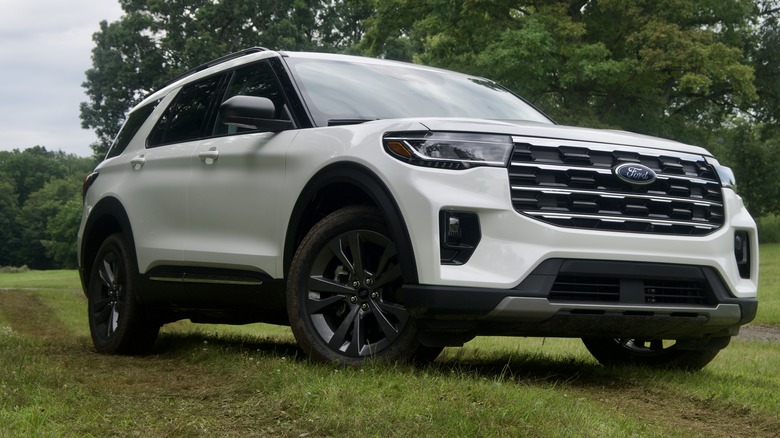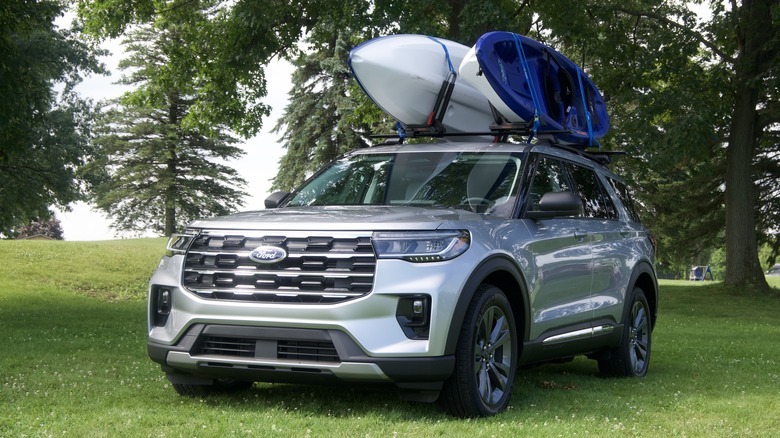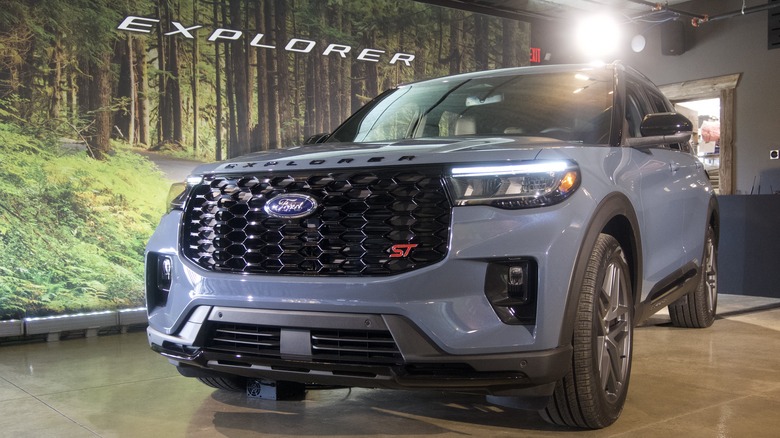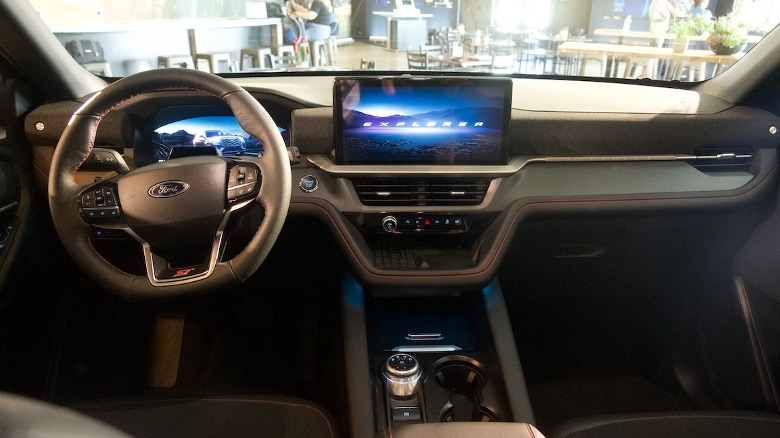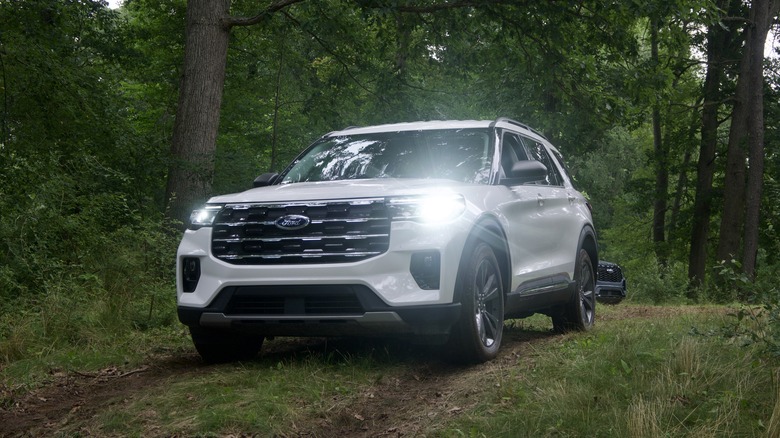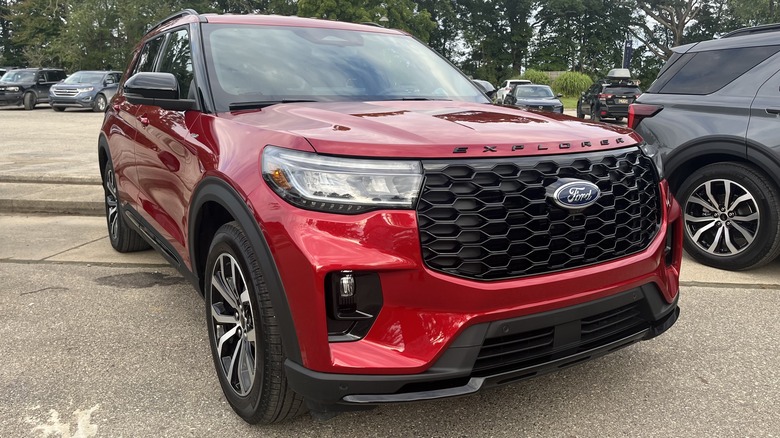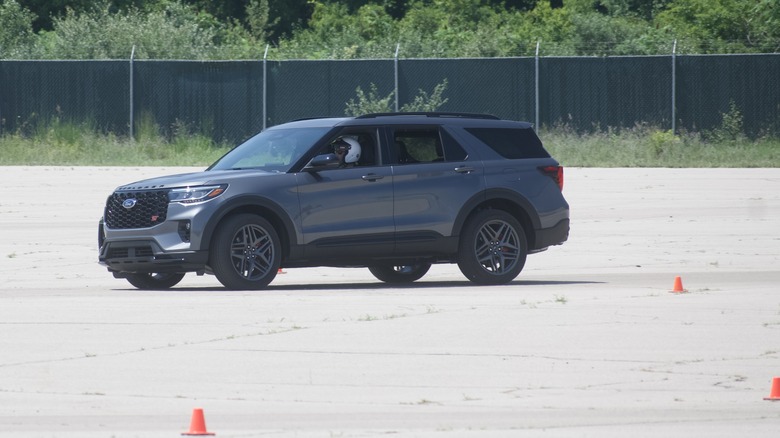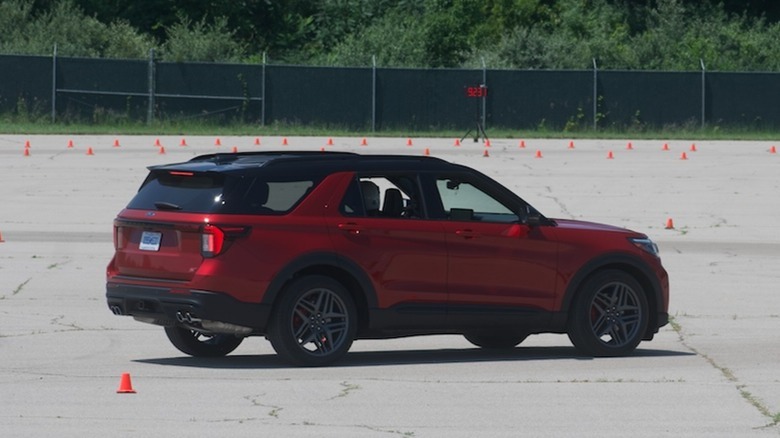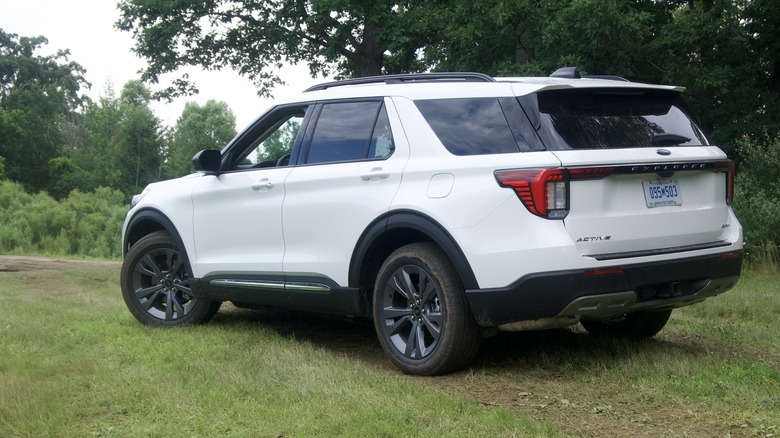2025 Ford Explorer First Drive: ST Brings The Power But Where's The Vision?
The Ford Explorer is not only a big deal for Ford and everything the Blue Oval touches, it's a big deal for the entirety of the automotive industry. Way before the electrified era we find ourselves in, Ford popularized the concept of a body-on-frame SUV with the 1991 Explorer. Pretty consistently since then, the Explorer has been one of the best selling American vehicles. It'd be hard to understate the Explorer's popularity and influence on the automotive world when it debuted over 30 years ago.
But now it's 2024, and Ford is gearing up the Explorer for the 2025 model year. To celebrate this, Ford sent me out to Ann Arbor, Michigan to see what it was cooking up for the refreshed Explorer. Before I get into the details of how Ford has changed the big SUV, it's important to note that it's not a new generation entirely, more of a facelift. Ford sought to assure me that it's a big enough change to warrant noticing.
A refresh on a classic
Way back in 2011, Ford made the decision to switch the Explorer to a unibody construction, meaning it no longer had a body sitting on the frame like Explorers of the past. The 2025 Explorer is no different. In fact, there are only a few actual changes from a 2024 to a 2025. The trim selection has been augmented a bit. It now starts with Active, ST-Line, Platinum, and ST. The front fascia and grille assembly have been updated significantly, Ford's driver-assistance feature Blue Cruise has been added, the back tailgate has been changed, and finally, the interior and infotainment system have been entirely reworked.
Ford said that, while a lot of the sheet metal and mechanical bits that comprise the 2025 Explorer haven't been touched for the new year, everything the driver meaningfully interacts with, i.e. the interior, infotainment system, Blue Cruise, etc. have been updated. It's about as close as you can get to a new generation of vehicle without having to actually make a new SUV. That said, this move is absolutely a shot across the bow at generally lower priced and newer entries into the SUV game like the Hyundai Palisade or Kia Telluride
Ford slims down the trims
Starting at $39,755 (plus $1,595 destination), the Active replaces the XLT trim of yore and is fitted with a 2.3-liter EcoBoost four-cylinder that pushes 300 horsepower to the rear wheels; AWD is an option. On the inside, you get the now standard 13.2-inch infotainment screen. Heated seats and USB-ports in every conceivable location are also standard equipment. Every Ford Explorer also gets 5,000 pounds of towing capacity. Next up, the $44,515, ST-Line gets 20-inch wheels for some extra bling, red cabin stitching for sportiness, a 10-speaker Bang & Olufsen sound system, and BlueCruise hands-free driver assist functionality.
Moving up the line, the luxo-Explorer Platinum, at $51,655, comes with leather upholstery; heated, ventilated, and massaging front seats; a moonroof; a 14-speaker B&O sound system; and heated seats for the second row. Last, is the most powerful Explorer, the $55,505 ST. A 3.0-liter EcoBoost V6 gives the ST its 400 horsepower. It has a sportier suspension configuration, 21-inch wheels, ST badges everywhere, and the third row can fold flat with the press of a button.
All the upgrades are nice, but how does the 2025 Explorer actually drive?
How does it drive
Ford was mostly saving the beefier ST Explorers for later, so I first hopped behind the wheel of an ST-line. I could go on a philosophical diatribe about what American SUVs mean in today's socioeconomic climate and the sign versus signified debate. But I will spare you, the reader and potential buyer of a 2025 Explorer.
The ride quality of the ST-line on Michigan's slightly less than stellar back roads is exactly fine for the task at hand. You aren't going to be uncomfortable and jostled around like unsecured cargo, but neither will you find yourself in a cocoon of luxury, either. It's smooth on the highway and bumpy on dirt. Ford didn't rock the boat too much on this one, nor did it really need to.
Next, I took a 2025 Explorer Active on an off-road course that Ford set up. Much to my chagrin, the "Off-road" drive mode worked rather well and as I thrashed about the short course. Don't tell anyone at Ford this happened, but I may have gotten a little bit of air when I took the Explorer off a small hill at a speed my mom would call "a bit much." The Explorer Active lived up to the "Sport" in "Sport Utility Vehicle."
Blue Cruise and Autocross
After getting airborne in an Explorer, Ford gave us directions to the next event. On the way over, I tested BlueCruise out on one of the pre-mapped highway stretches it's location-locked to only work upon. It operated exactly the same as any other BlueCruise vehicle I've tested, allowing me to take my hands off the wheel and have the system handle speed and lane-keeping. It drove uneventfully on Michigan's I-94 and did its best impression of a human driver, just as long as the actual human driver paid attention at all times. Not thrilling, then, but the last thing you want from a driver assistance feature is excitement.
Later in the afternoon, Ford had planned an autocross course for which to test the ST. An autocross course is typically held in a large parking lot, free of the sort of obstacles that would make an insurance adjuster break out on a cold sweat. Cones are placed to delineate a track and you are supposed to drive between those cones with the semblance of speed to get a good lap time. You can also just ignore the lap time and goof around in a 400-horsepower SUV in a big open space.
A hippo that took ballet
The ST handles itself surprisingly well on the autocross course. It's kind of like if a hippo took ballet lessons. It can figure out the curves without hurting itself or anyone else, and it's capable of breaking out into a sprint if it needs to. I don't know what a good time is for Ford's autocross course, so I won't bore you with specifics, but upon activating "Sport Mode," I managed to shave a full three seconds off my time. I never got tired of watching my colleagues throw an Explorer around an empty parking lot while the tires protested at every corner. You couldn't help but laugh.
Explorers of any trim level are not track vehicles, and the Explorer ST probably isn't going to be a track day staple in the future. But Ford managed to make the somewhat staid Ford Explorer at least moderately more exciting, and that's at least worth celebrating through a cloud of tire smoke.
Overall, it's just a light refresh for the Explorer and no real comprehensive changes. But the combination of slimming down the lineup for coherency's sake, adding Blue Cruise to keep up with the times, and making the ST trim worth its salt, keeps the Explorer fighting for at least a few more years. If only Ford kept the hybrid trim.
The future for Ford
I'm not going to say a 400 horsepower SUV is a bad thing, quite the opposite: I enjoyed driving new Explorer ST. But Ford is absolutely playing it safe with the 2025 model year. It's exactly exciting enough to potentially attract a few new buyers and retain existing customers trading in their old Explorers for the new one. Over the years, Ford has managed to sell around eight million Explorers, so it's clearly doing something right.
However, the automaker does not exist in a vacuum. The 2025 Explorer feels like an SUV designed for 2025 alone, with little vision of where the industry is moving. By not offering even a hybrid model, Ford has already dated the Explorer, while more electrification friendly brands like Toyota have been hybridizing for years. That's before you get to compelling three-row full-EV alternatives, like the Kia EV9.
With a higher MSRP than a lot of competitors, Ford will have to rely on brand recognition and the Explorer's 35 year long stint in the business to keep it relevant. The 2025 Explorer, especially in ST form, is a compelling SUV to be sure, but Ford needs to look to more than just past accolades and a facelift if it hopes to avoid being eclipsed by more ambitious rivals.
